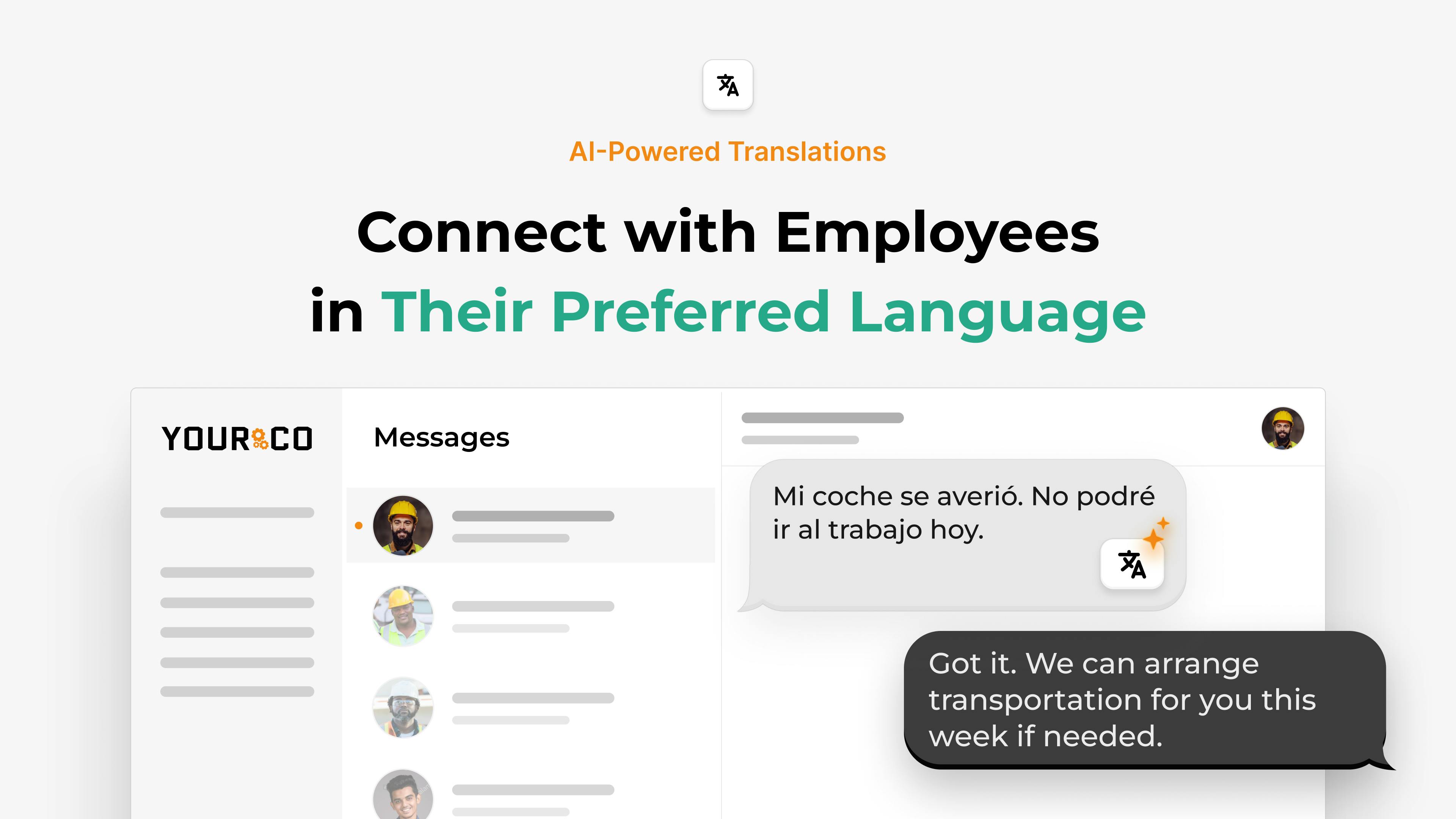Workplace Safety Best Practices: Clear Minor Injury Guidelines That Work


Workplace injuries are an inevitable challenge, particularly in industries like manufacturing, retail, and hospitality. While many incidents may seem minor at first, their cumulative effect can erode productivity, lower employee morale, and strain company finances.
Clear minor injury guidelines give managers a consistent framework to respond quickly and effectively, protecting both employees and business operations. This article explores best practices for creating and implementing strong minor injury protocols that help safeguard your workforce and reduce the hidden costs of workplace accidents.
Define Minor Injuries for Your Workplace Context
Understanding what qualifies as a "minor" injury creates the foundation for effective safety protocols. Each industry faces unique patterns that require targeted prevention efforts.
- Cuts and lacerations top the list, especially in manufacturing and food service where employees handle sharp tools daily
- Slips, trips, and falls causing sprains and strains happen everywhere and account for approximately 25% of reported injuries. These injuries tend to affect retail and warehouse workers the most
- Musculoskeletal injuries target physically demanding roles like construction and healthcare
- Contusions and bruises are common in logistics and manufacturing, where moving equipment creates impact risks
- Eye injuries from irritants, foreign objects, or strain affect thousands of workers daily, with construction and manufacturing workers at highest risk
- Minor burns (first to second degree) regularly occur in food service, manufacturing, and labs
Construction sites see more falls and struck-by injuries, while healthcare settings deal with more ergonomic injuries from patient handling. Knowing these patterns helps target prevention efforts and ensures your minor injury guidelines address the most relevant risks.
Implement Immediate Response Steps
A clear approach to injury response ensures consistent care and maintains compliance. Quick assessment and proper first aid directly affect recovery time and outcomes.
Assess the Situation Quickly
Those first moments after an injury matter most. Train your team to evaluate severity using the "RED" method:
- Responsive (is the person alert?)
- Experiencing (pain level)
- Dangerous (immediate threats like bleeding)
Injuries involving unconsciousness, severe bleeding, breathing problems, or suspected fractures need immediate emergency services. For everything else, ensure the area is safe before starting first aid.
Companies should establish a clear decision tree for employees to follow during assessment, reducing confusion and hesitation during stressful situations.
Provide First Aid Procedures
Good first aid directly affects recovery time:
- For cuts: Wash with soap and water, apply pressure with clean gauze, and secure with appropriate bandaging
- For sprains and strains: Use RICE (Rest the area, apply Ice for 20 minutes, Compress with an elastic bandage, and Elevate above heart level)
- For minor burns: Run cool (not cold) water over the area for 10–15 minutes, cover with a clean bandage, and don't break blisters. The American Burn Association warns against ice, which can worsen damage
- For eye injuries: Flush immediately with clean water for at least 15 minutes, especially for chemical exposure
Keep fully stocked first aid kits within reach as part of your minor injury guideline. Try to keep kits no more than 100 feet from any work area and ensure they contain supplies that match your workplace risks.
Document and Report Incidents
Quick reporting creates a record that protects injured employees and company compliance. Document everything, including:
- Date, time, and exact location
- How the injury happened
- Treatment provided on-site
- Witness names
- Photos when appropriate
Documentation should follow standardized formats to ensure consistency across departments. Electronic forms allow automatic data aggregation that reveals injury patterns over time. This trend analysis helps identify problem areas before they cause serious incidents.
Set Up Comprehensive Safety Education
Complete minor injury management requires ongoing education and clear communication channels. Training effectiveness directly impacts how well employees respond during actual incidents.
Build Effective Training Programs
Training needs vary by company size:
- Small businesses (under 50 employees) benefit from hands-on workshops and cross-training to ensure coverage
- Medium organizations (50–250 employees) should create department-specific training for unique risk profiles
- Large companies (250+ employees) need standardized protocols with designated safety champions in each department
Implement refresher courses every two years for basic first aid and yearly for industry-specific risks. Practical demonstrations work better than lectures, while scenario-based learning that mimics real workplace situations prepares staff to respond under pressure.
Digital training records support compliance documentation. Records should show training dates, content covered, instructor credentials, and employee verification. Training should incorporate adult learning principles that respect employees' existing knowledge while filling gaps.
Create Clear Communication Strategies
Safety communication works best through multiple channels:
- Physical posters reinforce protocols
- Regular safety meetings allow questions
- Digital resources provide on-demand information
- Text messaging proves particularly effective for safety communications, with a 98% open rate compared to email's 20%
Many frontline workers don't check email regularly or have reliable internet access. Text-based safety communication ensures that critical information, including minor injury guidelines, reaches employees regardless of where they work or their tech experience level.
Companies with multilingual workforces should translate all safety materials into relevant languages and utilize visual instructions where possible. Clear, inclusive language works better for mixed-tech environments and non-desk workers.
Streamline Incident Reporting and Response
Modern safety protocols require immediate reporting and real-time communication to prevent minor incidents from becoming major problems. Many organizations struggle with delayed incident reports, unclear communication channels, and inconsistent documentation that creates compliance gaps.
Enable Instant Incident Documentation
Employees can report minor injuries immediately by texting photos and details directly to your company's dedicated safety number. When a warehouse worker notices a spill or cuts their hand on equipment, they can instantly document the incident with timestamped photos and descriptions rather than waiting until the end of their shift.
This immediate reporting capability transforms safety culture by removing barriers to documentation. Workers using basic phones can still participate fully in safety protocols, ensuring no incident goes unreported due to technology limitations.
Facilitate Real-Time Safety Communication
Safety alerts reach most employees almost instantly via text message. When a manufacturing facility discovers an equipment malfunction, managers can immediately alert all relevant staff across multiple shifts and locations simultaneously.
Two-way communication enables immediate follow-up on safety concerns. Supervisors can reply directly to incident reports to ask clarifying questions, request additional photos, or confirm that affected areas have been secured. This creates a continuous safety dialogue rather than one-way reporting.
Support Multilingual Safety Compliance
Automatic translation capabilities ensure safety information reaches every employee in their preferred language. When a construction company needs to communicate new safety protocols to a diverse workforce, messages are instantly translated into Spanish, Vietnamese, or any of 135+ supported languages and dialects without manual intervention.
This eliminates dangerous communication gaps where critical safety information might be misunderstood due to language barriers. Policy acknowledgments are automatically tracked and logged, maintaining compliance documentation across all language groups.
Maintain Comprehensive Safety Records
All incident reports, safety communications, and employee responses are automatically archived with timestamps and employee identification. This creates a searchable database for trend analysis, compliance audits, and continuous improvement efforts.
Safety managers can identify patterns such as increased incidents during specific shifts, recurring problems at particular locations, or equipment that frequently causes minor injuries. This data-driven approach enables proactive interventions before minor issues escalate into serious accidents.
Boost Safety Performance With Smart Communication
Minor workplace injuries accumulate into substantial organizational impacts, but companies implementing comprehensive guidelines consistently show better safety metrics and operational performance. Organizations with strong protocols experience measurably lower incident rates, improved productivity, and enhanced employee confidence.
Safety guidelines succeed when they reach all employees exactly when needed. Text-based safety communication matches today's workforce needs—mobile, distributed, and requiring immediate information access. While email reaches only 20% of recipients, SMS delivers safety protocols with 98% readership, ensuring your minor injury guidelines get seen and followed.
Yourco's SMS platform enables instant distribution of first aid instructions, incident reporting with photographic evidence, and compliance documentation with timestamp verification. Employees can report incidents by texting photos directly to your company's dedicated number, creating automatic documentation for insurance and legal use. This eliminates communication gaps for workers without constant computer access while supporting real-time safety culture improvements.
Managers receive immediate alerts when incidents occur, enabling faster response and follow-up. With AI-powered translations in 135+ languages and dialects, safety information reaches every employee in their preferred language, ensuring no one misses critical protocols due to language barriers.
Try Yourco for free today and see how the right workplace communication solution can transform your company's safety performance.
Frequently Asked Questions
What qualifies as a minor workplace injury versus a major one?
Minor injuries typically include small cuts, minor burns, bruises, and light sprains that can be treated with basic first aid. Major injuries involve unconsciousness, severe bleeding, breathing difficulties, suspected fractures, or anything requiring emergency medical services.
How quickly should minor injuries be documented?
Document all workplace injuries immediately, ideally within the first hour. Quick documentation protects both the employee and company while ensuring accurate details are captured before memory fades.
What should be included in a workplace first aid kit for minor injuries?
First aid kits should contain bandages, gauze, antiseptic wipes, instant cold packs, elastic bandages, scissors, gloves, and burn gel. Kits should be customized based on your industry's specific risks and located in easily accessible areas near work zones.
How often should employees receive safety training for minor injury protocols?
Provide basic first aid refresher training every two years, with industry-specific safety training annually. More frequent training may be needed for high-risk environments or when injury patterns indicate knowledge gaps.
Can employees use personal phones to report workplace injuries?
While personal phones can be used, many companies prefer dedicated communication systems to maintain professional boundaries and ensure proper documentation. Text-based reporting systems provide automatic timestamps and centralized record-keeping for compliance purposes.




